Southwest Michigan field crops update – July 24, 2025
Hot and dry conditions hit crops hard in areas of southwest Michigan. Potato harvest began, and wheat harvest is wrapping up.

Weather
This past week saw occasional scattered showers, which has been the story of southwest Michigan since mid-May. Some areas are extremely dry, and others have received adequate moisture for dryland crop production. Late last week brought a couple days of cool weather before returning to the hot and humid conditions we’ve experienced nearly every week. Heat indexes yesterday, July 23, and today are especially high due to temperatures and high dew points. Significant precipitation is forecast for this weekend.
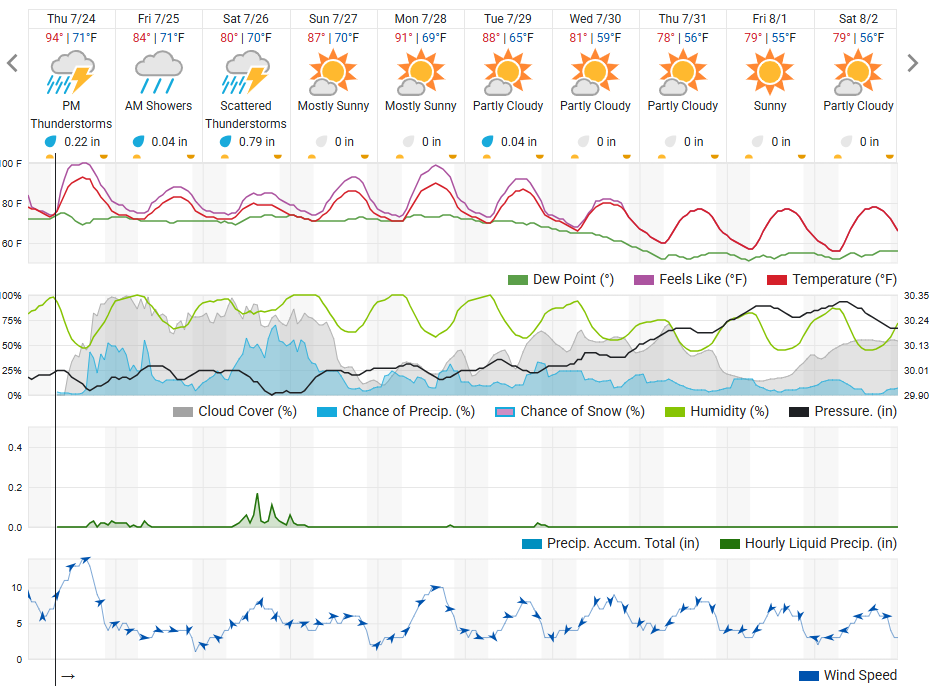
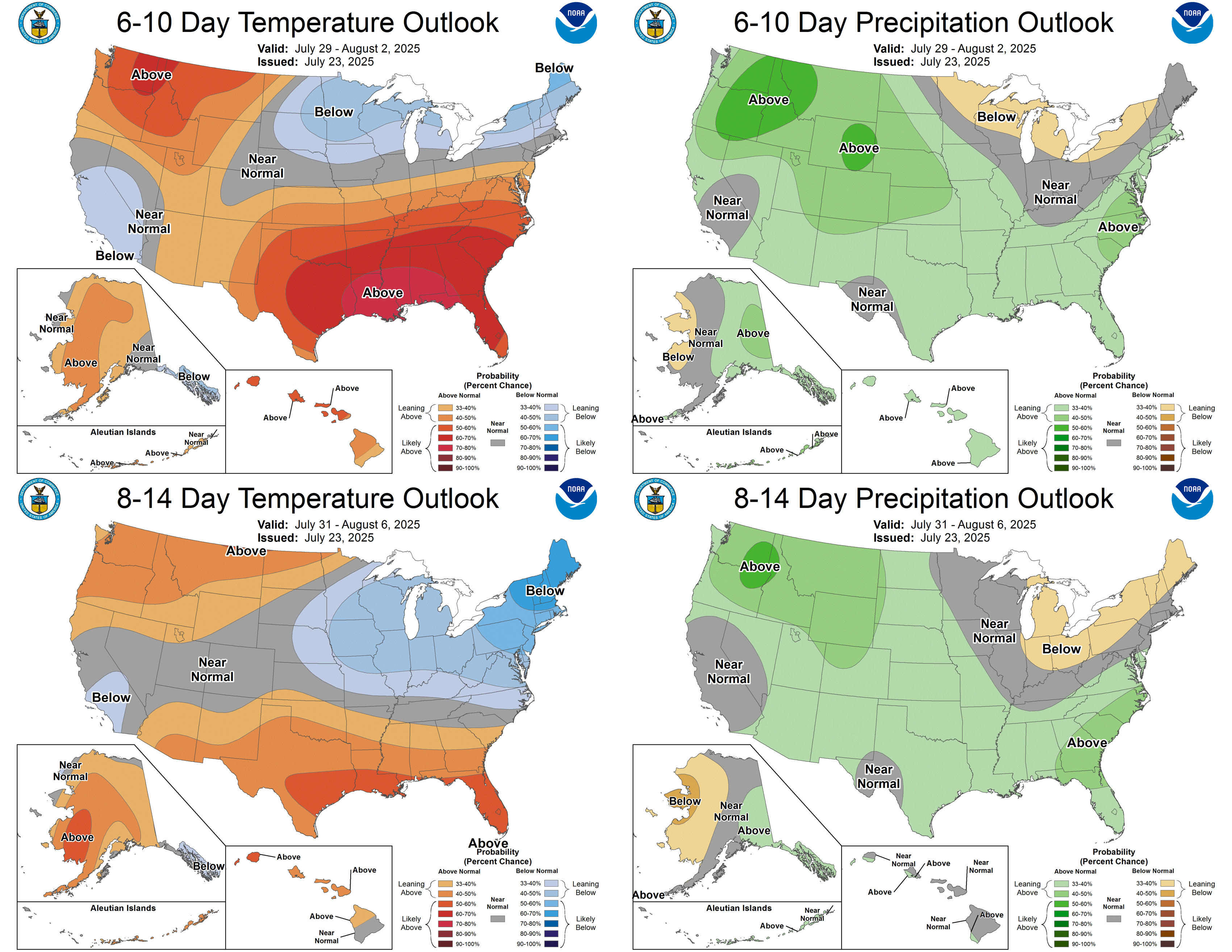
Crops and pests
Soybeans are mostly in early pod stages. R3 starts when a pod at the fourth node down the main stem is 3/16 inches long. At R4, a pod at the fourth node is 0.75 inches long. Fungicides to prevent white mold should be applied between R1 and R3. Once soybeans hit R4, fungicides have very little if any efficacy on white mold prevention. Risk models based on weather show high white mold risk on irrigated fields and low white mold risk on unirrigated fields for the next several days. The moist environments of irrigated fields increase the risk of disease development. Frog-eye leaf spot risk is moderate.
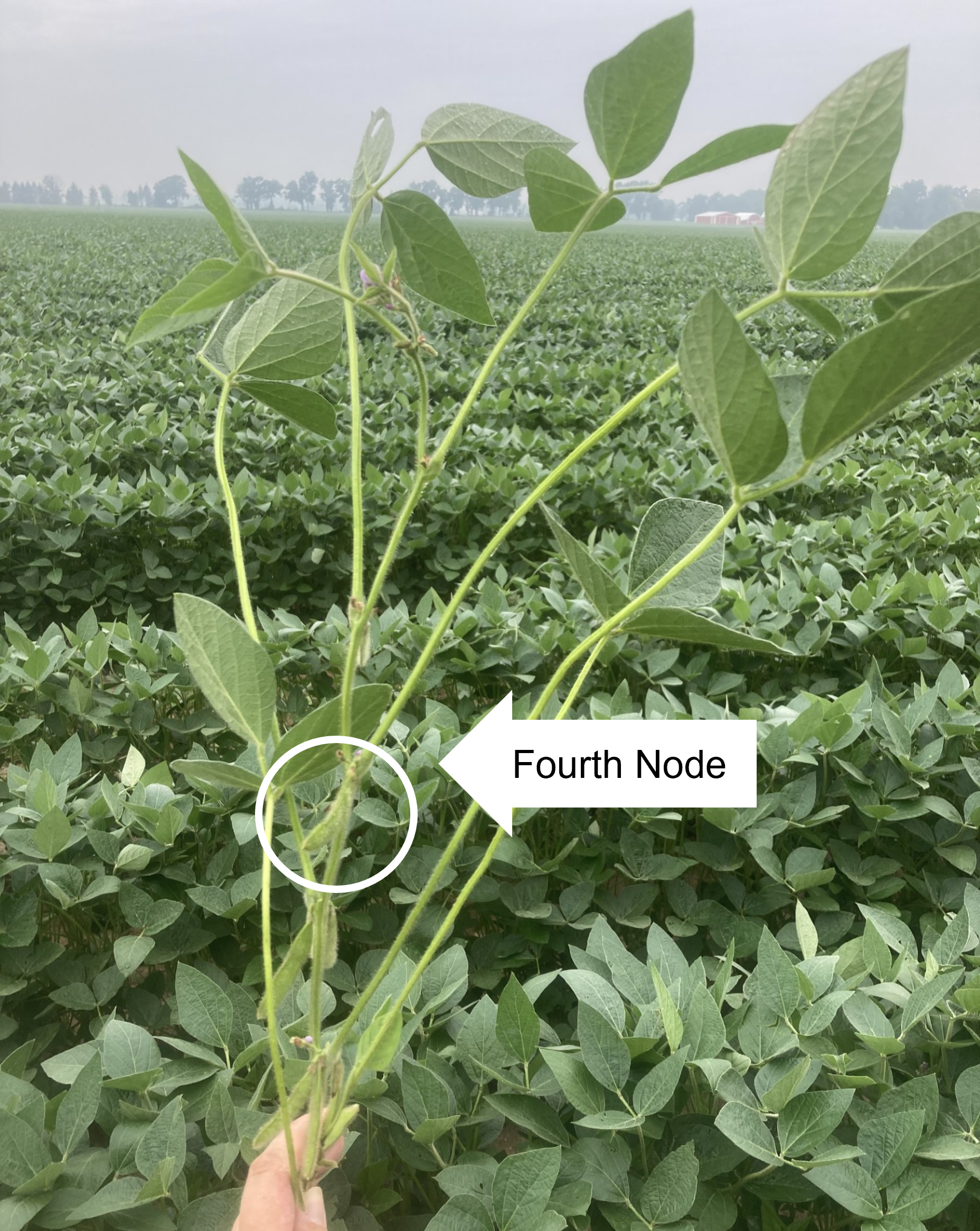
Corn continues to progress in reproductive stages. Silks have emerged on corn ears (R1), and some ears are at R2, which is when the kernels are full of clear liquid (like a blister). Seed corn detasseling continued this past week.
Tar spot was confirmed in Calhoun County this past week. The best timing for a single fungicide application is still between VT and R3-4. Risk models show low tar spot risk for the next week for unirrigated fields, but moisture increases tar spot infection, so irrigated fields are at higher risk.
Western bean cutworm moth flights have been low. Prioritize scouting on corn that is close to tasseling or freshly tasseled. Watch for egg masses in the upper two thirds of the canopy by walking with the sun backlighting the plants. Egg masses will appear as dark shadows on the leaves.
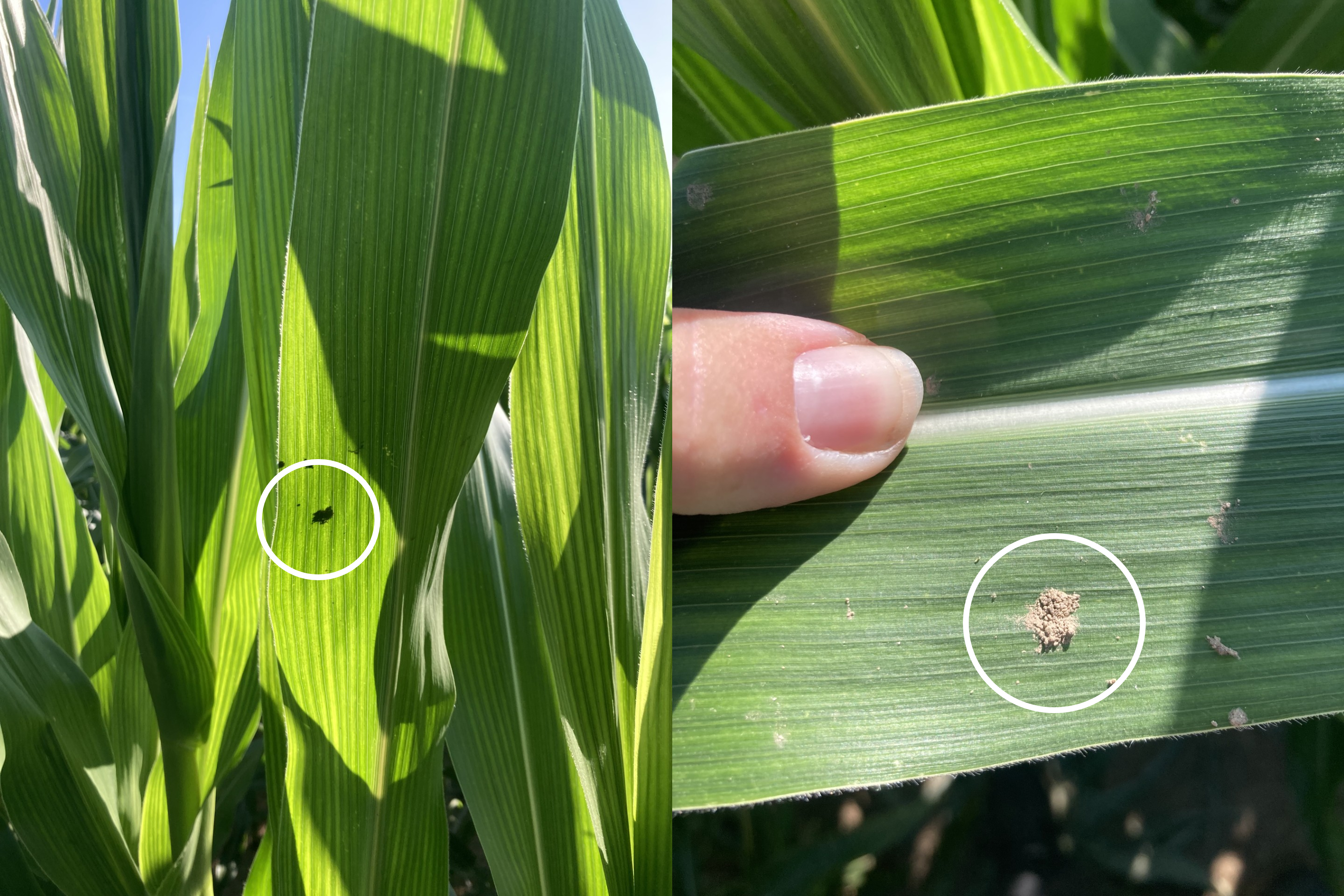
Bucket traps in Berrien (near Niles), Branch (near Union City), St. Joseph (near Centreville and Sturgis) and Van Buren (near Paw Paw) counties have caught the following western bean cutworm moths:
|
Date |
Branch 1 |
Branch 2 |
Centreville |
Niles |
Paw Paw |
Sturgis |
|---|---|---|---|---|---|---|
|
7/21 |
74 |
72 |
7 |
-- |
57 |
32 |
Winter wheat harvest continued and is close to wrapping up. Today’s Field Crops Virtual Breakfast Series touched on cover crop options for after wheat. The Michigan State University Extension article, “Considering double-crop soybeans after a winter cereal this year?,” the Midwest Cover Crops Council’s cover crop recipe for planting after wheat going into corn or soybean and the Michigan State University Extension fact sheet “Cover crop tolerance to winter wheat herbicides” can help guide decisions on what to plant after wheat.
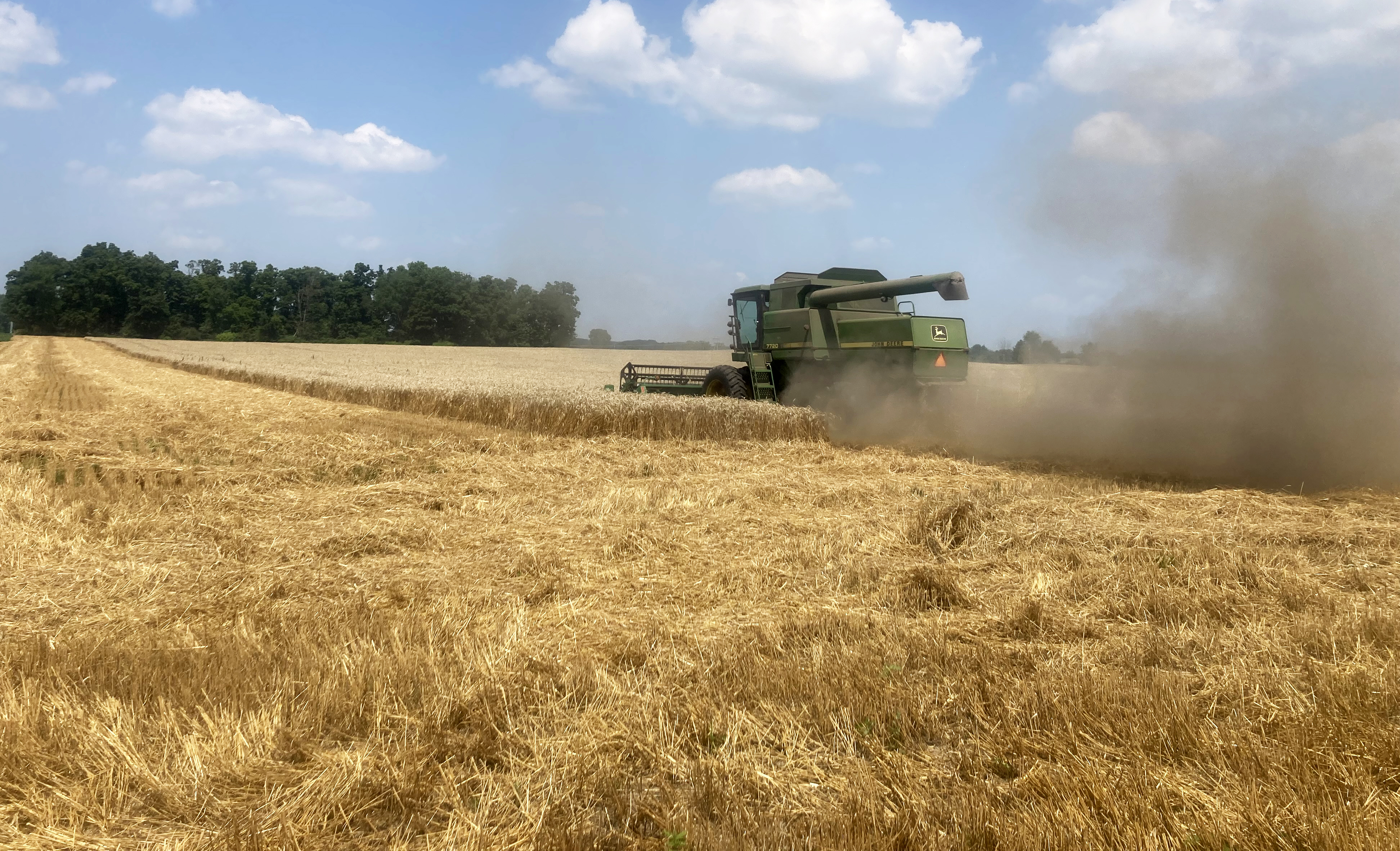
Fresh crop chip potato harvest started late last week. Vine kill also started on early-harvest tablestock potatoes. The heat and humidity are conducive to vine rot. While humidity contributes to late blight spread, temperatures have generally been higher than the disease prefers, so the forecasted late blight risk is low.
Colonizing aphid pressure will continue probably until vine kill. Make sure to rotate insecticide modes of action and not apply one mode of action more than twice consecutively.

Alfalfa and forages continue at variable stages of development; however, many fields were at the cutting and baling stage over this past week.
Weekly water use
Corn is currently at peak water use, with the most critical period occurring between VT (tasseling) and R3 (early grain fill). This window often aligns with the hottest part of the summer, when transpiration demand exceeds the plant's water uptake, increasing the risk of water deficiency. Ensuring adequate soil moisture during this time is essential to avoid delayed silk emergence, poor pollination and yield or quality loss. Weekly water use for corn is around 1.5-1.55 inches and often exceeds rainfall in dry areas.
Soybeans are most sensitive to water stress during the R3 to R6 stages (pod development through seed fill). Stress during these stages can lead to flower and pod abortion, leaf drop and reduced yield potential. Leaf flipping, exposing the silvery-green underside, is an early symptom of stress. Water use for soybeans is around 1.5-1.55 inches per week. For efficient irrigation, apply enough water to meet five to six days of crop water use, typically 1 to 1.25 inches per irrigation. Be sure to adjust for recent rainfall and leave room in the soil profile to capture future precipitation.
For more information, please refer to the peak water use article. Irrigation Scheduling Tools can help estimate crop water needs and decide timing and application.
Estimated weekly crop water use for field crops in Michigan (in/week) for the week of July 21-27.
| Crop | Growth stage | Constantine | Entrican | Hart |
|---|---|---|---|---|
| Reference ET | 1.42 | 1.4 | 1.31 | |
| Corn | V10 | 1.08 | 1.06 | 1 |
| Corn | V12 | 1.42 | 1.4 | 1.31 |
| Corn | V16, VT, Silk, Blister, Dough, Begin Dent | 1.56 | 1.54 | 1.44 |
| Soybeans | R1 Beginning Bloom | 1.42 | 1.4 | 1.31 |
| Soybeans | R2 Full Bloom | 1.56 | 1.54 | 1.44 |
| Soybeans | R3 Begin Pod / R4 Full pod | 1.56 | 1.54 | 1.44 |
The table above presents estimated crop water use for various field crops across three locations in Michigan. This data helps irrigation management decisions by showcasing potential crop evapotranspiration, calculated based on reference evapotranspiration and crop coefficients for each crop growth stage. It is crucial to note that crop water use values vary across regions due to differences in weather conditions, growth stages, agronomic practices and soil properties.
When using these values for irrigation scheduling, be mindful that they assume all applied irrigation water will be utilized by the plants without any loss. Additionally, these values do not account for any precipitation that may occur during the week of calculation.
Reference evapotranspiration data was obtained from Michigan State University Enviroweather, which also offers a model for determining potential crop evapotranspiration. To access this tool, visit Enviroweather, click on "Crops," select your crop and use the potential evapotranspiration tool by choosing your nearest weather station, the latest date of interest and other crop information.
Field Crops Virtual Breakfast Series
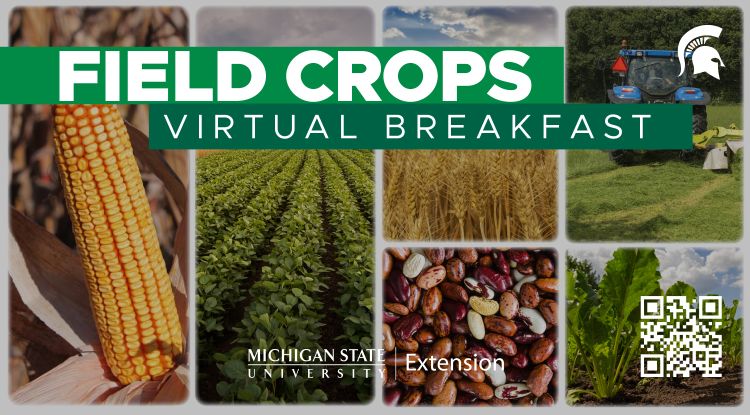.jpg?language_id=1)
Cover crops after wheat, presented by Brook Wilke, associate director at the Kellogg Biological Station, was the topic for the MSU Extension Field Crops Virtual Breakfast this week. There are several cover crop species that do well when planted after wheat, but there are some considerations to be aware of.
Recordings of this and all the Virtual Breakfast meetings are closed-captioned and available at the Field Crops Virtual Breakfast webpage and the MSU Extension Field Crops Team social media platforms: Facebook, Spotify, YouTube, Apple Podcasts and Twitter/X.
This work is supported by the Crop Protection and Pest Management Program [grant no 2024-70006-43569] from the USDA National Institute of Food and Agriculture. Any opinions, findings, conclusions, or recommendations expressed in this publication are those of the author(s) and do not necessarily reflect the view of the U.S. Department of Agriculture.



 Print
Print Email
Email